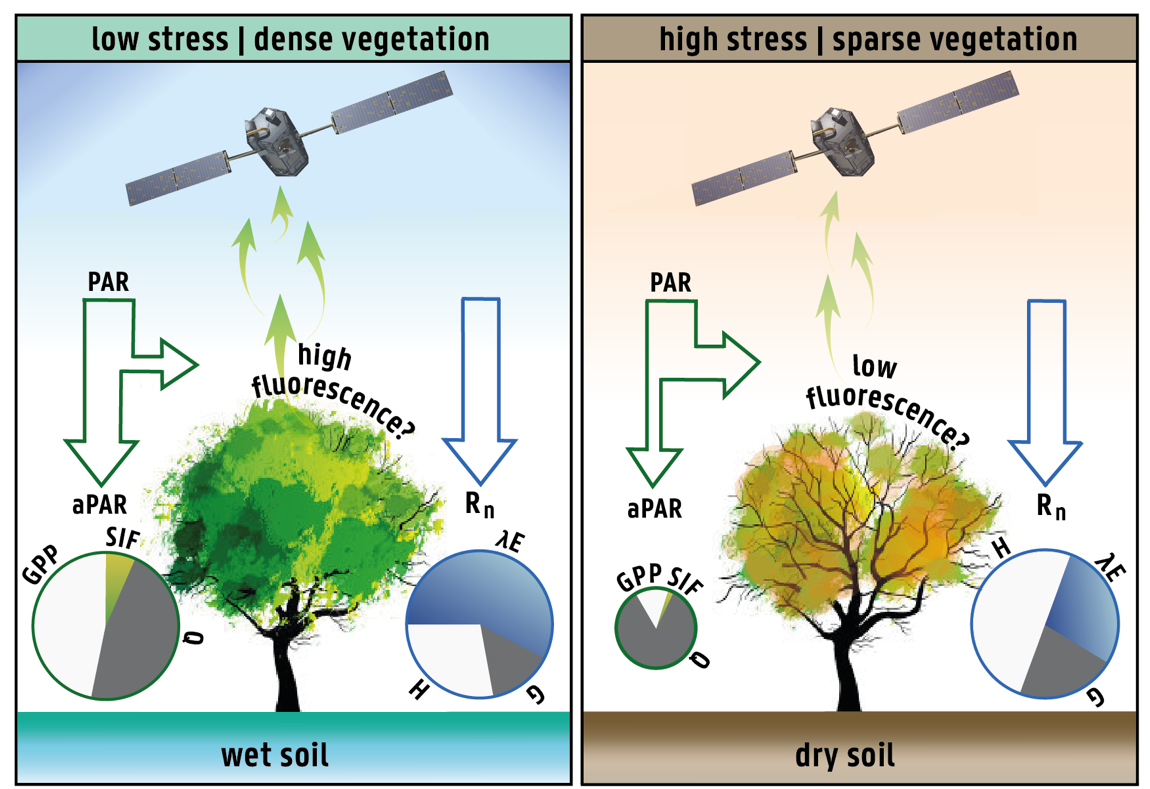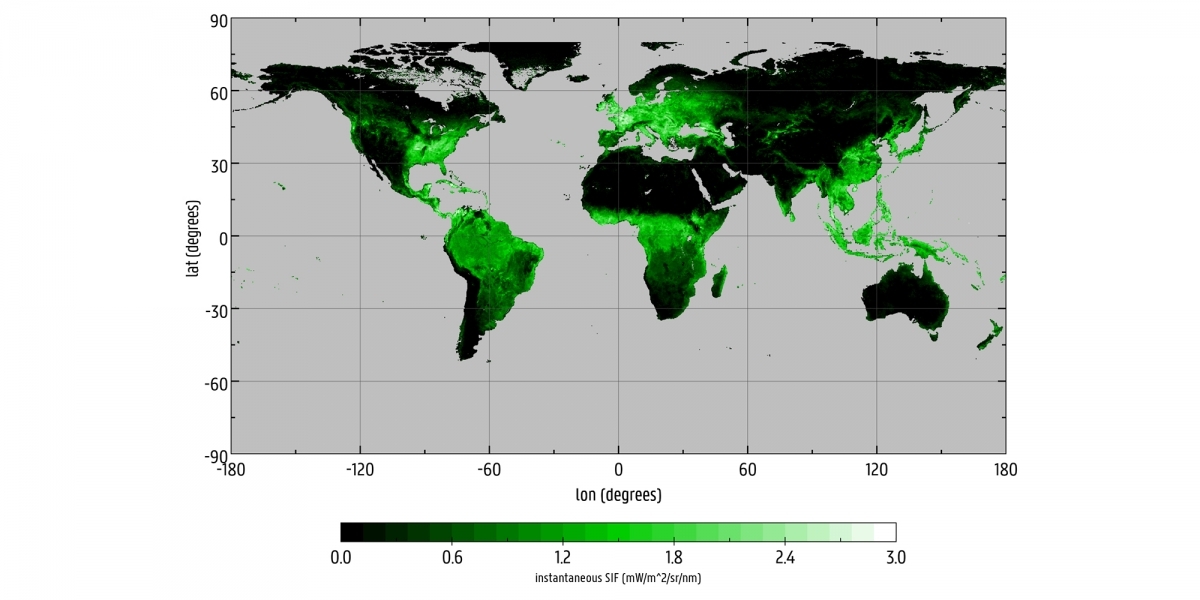Published on 4 June 2020
Understanding and modeling the water and carbon cycles at a global level are fundamental challenges for sustainable improvement of our environment.
On this World Environment Day, let's throw a spotlight on the STEREO project STR3S, the results of which will no doubt improve knowledge of climate-vegetation interactions. Or rather, let the fluorescence of plants shed light on the functioning of ecosystems. Because it's all a matter of measuring the fluorescence of chlorophyll, this subtle radiation that plants emit when they are photosynthetically active.
When plants are not subjected to stress, their photosynthetic reactions indeed emit a slight radiation of wavelengths between red and the near infrared, fluorescence. It is generally overlooked because it is overwhelmed by the reflection of sunlight on plants.
From stomata to drought
Plants have tiny cavities on their leaves, called stomata, that they use to take their food: when stomata open CO2 enters the plant for photosynthesis. However, simultaneously, leaf water is lost via evaporation into the atmosphere through a process called "transpiration".
The total amount of water released into the atmosphere through the transpiration of plants is extremely important. On a global scale, the volumes of water thus "lost" are greater than all of the volumes of water flowing from rivers into the oceans. We put "lost" in quotation marks because these water flows are anything but useless. Transpiration has fundamental functions, both on a plant scale and worldwide.
At the plant scale, transpiration transfers nutrients all the way from the soil to the leaves, and acts as air conditioning for the plants when they experience hot temperatures. At larger scales, transpiration cools down the environment and may even create clouds and rain. Moreover, recent studies indicate that transpiration affects the development of drought and heat spells, even hundreds of kilometres away.
Fluorescence and the water cycle
It is essential to better understand the process of transpiration in order to improve our understanding of the dynamics of the water cycle on a global level. However, an important problem hampers scientific progress: transpiration is an invisible process which cannot be detected from space and which is therefore little known on a global level.
Nonetheless, recent progress in remote sensing of photosynthesis has brought new hope in this direction. Photosynthesis can now be directly measured using satellite observations of the chlorophyll fluorescence, recorded by very specific sensors.
Since transpiration and photosynthesis are synchronized, is it also possible to extract data on transpiration from these fluorescence observations? This question was the focal point of the STEREO exploration project STR3S.
The researchers of this ambitious project therefore studied the potential of the fluorescence signals observed by satellites to estimate perspiration. They focused particularly on ecosystems subject to drought stress for which understanding transpiration responses is crucial for plant survival.
The results obtained made it possible to demonstrate that there is a strong empirical link between the fluorescence signals detected from space and perspiration. Thanks to an advanced model imitating the biological processes of plants, the mechanistic relationship between plant perspiration and fluorescence has been studied in depth. The results indicate that this relationship is mainly regulated by air temperature. The variability of the temperature indeed helps to explain the volumes of water lost in the atmosphere when a fluorescence signal of a specific intensity is observed.
The STR3S project also highlighted the gaps in the representation of perspiration by current climate models. These gaps could be filled in the near future with the launch of satellites and sensors to measure fluorescence from space and generate accurate estimates of large-scale perspiration. This will be useful for multiple applications, ranging from increased predictability of climate extremes to quantifying irrigation needs in food production systems, or managing water resources during droughts.


